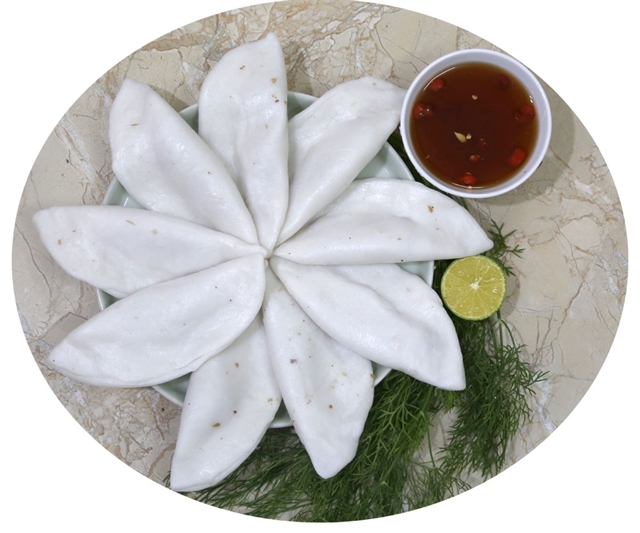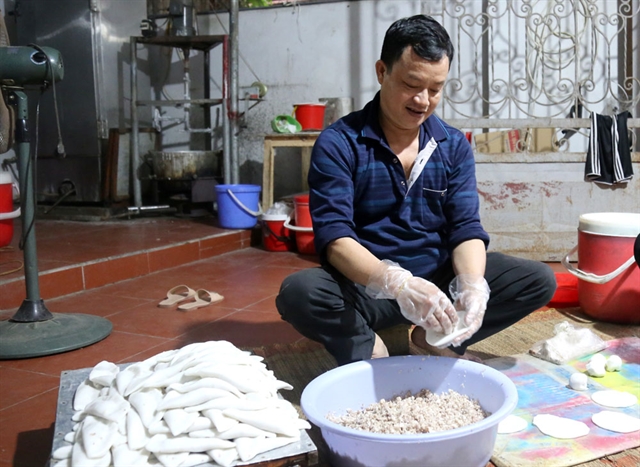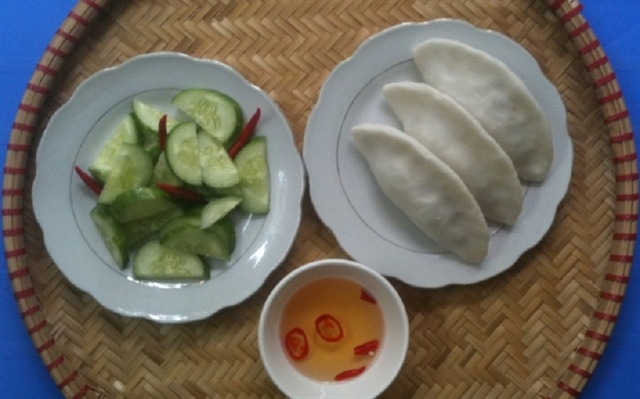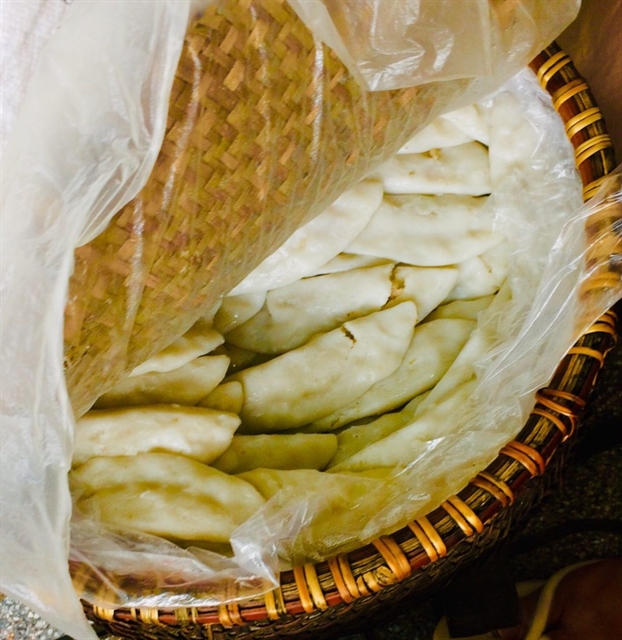I was lucky to have had the opportunity to enjoy the bánh tai (ear cake), a popular speciality of the midland province of Phú Thọ, made by my friend’s mother Đặng Thị Hòe. The cake was tastiest when dipped in a quality fish sauce mixed with lemon juice and chilli.
I asked about the cake’s name, Hòe said it looks like an ear shape so locals call it bánh tai.
“The hand-made cake has been closely connected to our lives for a century,” she said, noting that making the cake is not very complicated but not many people can make it taste good.

A tasty bánh tai (ear cake) from Phú Thọ Province. — Photo baophutho.vn
In the past, the cake was a breakfast food but now many people buy it to eat instead of their lunch or dinner, it is always present at family gatherings and parties, Hòe said.
Hòe, who learned to make the cake from her grandmother when she was twelve, said the most important step is to choose good quality rice known locally as gạo tám Điện Biên (special soft and fragrant rice planted in the northwestern province of Điện Biên).
She said the rice should be cleaned and soaked in warm water for 4 to 6 hours before grinding it in a stone mortar although these days the rice is often ground with a machine.
After grinding the rice, the baker should squeeze the rice dough into balls. Each ball should be about 0.5 kg. They then go into a boiling water pot over a medium fire for 15 to 20 minutes before fishing them out to put them in a stone mortar. Once more the rice is ground until it becomes well-kneaded.

A local baker kneading bánh. — Photo baophutho.vn
Hòe said the next step is to use your hands to knead the dough into balls. Each ball should be as big as a duck egg. Then continue to knead the balls into the shape of an ellipse similar to an ear. The dumpling mixture is then put inside.
The pork shoulder blade for the filling should be from a lợn ỉ, a traditional pig that weighs between 60-70kg. This kind of pig is raised without chemicals so its pork is fragrant and soft compared with pig raised in industrial farms. It is mixed with dried purple onions, fish sauce, broth mix and pepper, says Hòe.

A tray of bánh tai ready to be served to customers. — Photo vietyouth.vn
The ingredients are then mixed with a soup spoon of fish sauce and one teaspoon of pepper and then it goes in the refrigerator on the middle shelf for half an hour. It is then fried.
“This way the pork marinades with other ingredients to make it tastier,” she said.
After putting the dumpling mixture in the middle of the dough ball, put the finished balls in a steamer and cook for about 60 minutes. Then take them out and put them in a big basket lined with banana leaves and a nylon cloth to ensure that the cakes remain warm until they are all sold.
Hòe says that her cakes always sell very well and she has many repeat customers.
She recommends eating her cakes with new rice porridge and quality fish sauce mixed with chili and pepper.

Bánh tai are often placed in a big basket lined with banana leaves and nylon cloth to ensure they stay warm. — Photo dulichtaybac.vn
Student Bùi Quang Huy says with only three bánh tai as his breakfast, he feels quite good in the morning and ready to learn and to workout without feeling hungry.
“I enjoy the cake so much, in particular its flavour and the aromatic fragrance of the filling,” he said.
Hòe’s neighbour Lê Thị Phượng, says her family often produces between 2,000 and 3,000 bánh tai a day which they sell for VNĐ 3,000/cake.
“The job not only earns my family a stable monthly income but also helps to make Phú Thọ Province, where the Hùng Kings were born two thousand years ago, famous,” Phượng said.
Quý Dương